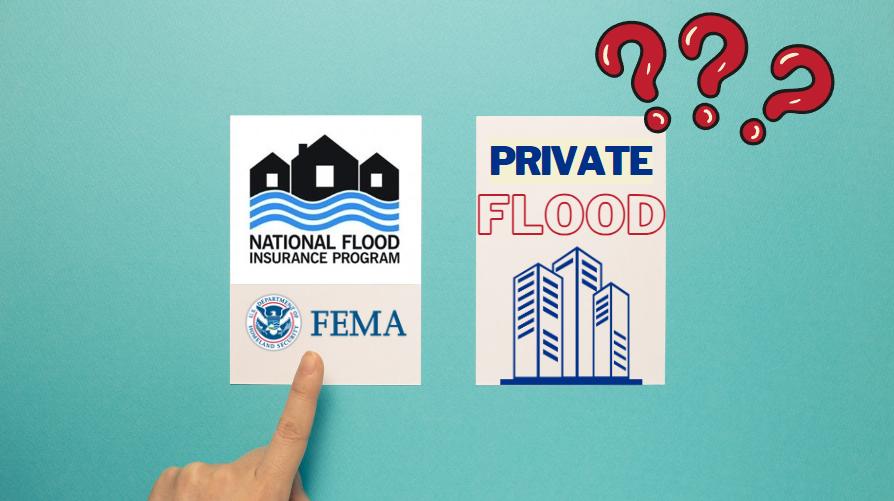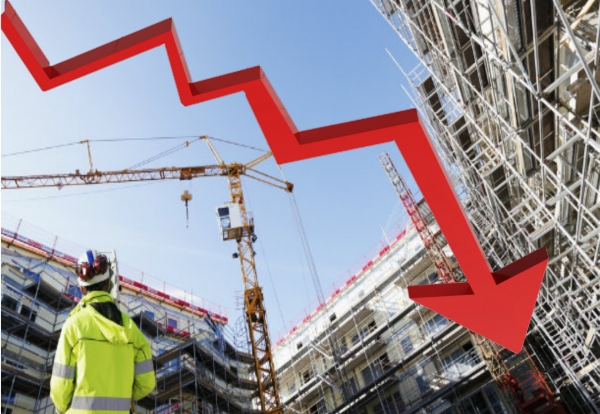Hidden Coastal Flood Risks in 2024: What Homeowners and Real Estate Investors Need to Know About Flood Zones
Hey there, Chris Greene here with The Flood Insurance Guru, and today we’re diving into some critical updates about coastal flood risks that you need to know in 2024. Whether you’re a homeowner or a real estate investor, understanding these hidden risks can save you a lot of money and headaches. So, let’s get started!
Hidden Flood Risks
As coastal communities face increasing threats from sea level rise and intensifying storms, new data reveals that the hidden flood risk in many areas far surpasses official estimates.
Research by the First Street Foundation indicates that nearly 14.6 million U.S. properties may be susceptible to flood damage—almost double the number shown on federal flood maps.
This highlights the urgent need for updated risk assessments and infrastructure improvements as we move through 2024 and beyond.
El Niño’s Impact on Coastal Flooding
El Niño conditions are expected to compound the effects of sea level rise and increase high tide flooding along U.S. coasts in 2024.
According to NOAA, coastal communities in eight locations along the East and West coasts experienced record high tide flooding last year. This trend is likely to continue and intensify with the strengthening of El Niño. NASA’s analysis suggests cities on the western coasts of the Americas could see up to five “10-year flood events” this winter in places like Seattle and San Diego.
This increased flooding risk is not limited to the U.S.; cities across the western coast of the Americas may experience more frequent high-tide flooding that can swamp roads and low-lying buildings.
Climate Change and Intensifying Rainstorms
Climate change is intensifying severe rainstorms, posing growing risks to infrastructure and increasing flood hazards across the United States. Recent calculations reveal that approximately 11% of the population in the contiguous U.S., particularly in densely populated areas like the Mid-Atlantic and Texas Gulf Coast, are exposed to heavy rainfall events that exceed local drainage system capacities by at least 50%.
As global temperatures rise, the atmosphere can hold about 7% more moisture for every 1 °C increase, leading to heavier and more frequent extreme precipitation events.
Hidden Costs of Climate Change for Coastal Homeowners
Climate change is imposing significant hidden costs on coastal homeowners, extending far beyond the immediate threats of flooding and storm damage. A study published in Nature reveals that under an extreme sea level rise scenario, the annual expected repair costs for foundations of homes in low-lying areas surrounding Mobile Bay, Alabama, could reach up to $90 million by 2100 due to saltwater intrusion and corrosion.
This issue isn’t limited to Alabama—coastal regions across the United States, particularly in the Southeast and Gulf Coast, are vulnerable to similar hidden costs. Additionally, climate change is driving up insurance premiums, with some areas becoming too costly to insure, especially for lower-income homeowners.
Coastal Flood Zone Challenges
Coastal flood zones face increasing risks in 2024 due to climate change, sea level rise, and more intense storms. The National Flood Insurance Program (NFIP) has updated its risk assessment methods, now considering factors like distance to water, flooding frequency, and replacement costs rather than just flood zone designations. This has led to premium increases, with average costs in coastal areas rising from around $2,000 to $3,500-$4,000 annually.
Recent Flood Event: Fort Lauderdale
One of the most significant flood events of 2024 occurred in Fort Lauderdale, which experienced a “1000-year” flood. This catastrophic event was marked by unprecedented rainfall, overwhelming local drainage systems, and causing widespread damage.
The deluge brought to light the severe vulnerabilities of coastal cities to extreme weather events exacerbated by climate change. Homes, businesses, and infrastructure were severely impacted, highlighting the critical need for robust flood risk management and resilient infrastructure.
This event serves as a stark reminder of the hidden risks that coastal communities face and the urgent need for updated flood risk assessments and comprehensive flood insurance coverage.
Understanding Coastal Flood Insurance Options
When it comes to flood insurance, homeowners and real estate investors have two primary options: the National Flood Insurance Program (NFIP) and private flood insurance. Each has its benefits and drawbacks, particularly in coastal flood zones.
National Flood Insurance Program (NFIP)
- Government-Backed: NFIP is a federal program managed by FEMA, providing coverage for up to $250,000 for building and $100,000 for contents.
- Standardized Rates: Rates are standardized and regulated, providing consistency and predictability.
- Availability: Generally available to anyone in a participating community.
- Grandfathering: Existing policyholders can benefit from grandfathered rates, which can be lower than current rates.
- Coverage Limits: Coverage limits can be insufficient for high-value coastal properties.
- Premium Increases: Annual premium increases are capped, usually up to 18%.
Private Flood Insurance
- Higher Coverage Limits: Private insurers often offer higher coverage limits, which can be crucial for expensive coastal properties.
- Customized Policies: More flexibility in terms of policy customization and additional coverage options like loss of use.
- Competitive Rates: Can sometimes offer competitive rates, especially in lower-risk areas.
- Non-Renewal Risk: High non-renewal rates in high-risk coastal areas can leave homeowners without coverage unexpectedly.
- Market Volatility: Private insurance markets can be volatile, with premiums subject to significant fluctuations based on reinsurance markets and recent flood events.
High Non-Renewal Rates with Private Insurance
One major concern with private flood insurance is the high non-renewal rate in coastal flood zones. Private insurers are more likely to non-renew policies in high-risk areas after significant flood events or changes in risk assessments.
This can leave homeowners scrambling to find new coverage, often at much higher rates or with less favorable terms. This volatility highlights the importance of working with experienced insurance brokers who understand the intricacies of the coastal flood insurance market and can help you navigate these challenges.

Flood Zones No Longer Determine Rates with the NFIP
A significant change with the National Flood Insurance Program (NFIP) is that flood zones no longer determine rates. Instead, the NFIP has shifted to a risk-based pricing model, which takes into account several factors beyond just the flood zone designation:
- Distance to Water: Proximity to bodies of water such as rivers, lakes, and the ocean.
- Flooding Frequency: Historical data on how often an area has experienced flooding.
- Type of Flooding: Whether the flooding is due to coastal surge, rainfall, or other factors.
- Replacement Costs: The cost to rebuild the property, considering current construction costs.
This shift means that even properties in the same flood zone can have different premiums based on their unique risk profiles. It’s a more personalized approach, aiming to reflect the true risk of each property more accurately. However, it also means that some homeowners might see significant changes in their flood insurance premiums.
What Can You Do?
- Grandfathered Policies: If the current homeowner has an NFIP policy with a lower, grandfathered rate, you might be able to take it over.
- Private Insurance Options: Work with brokers who specialize in flood insurance to explore multiple options and understand the reinsurance markets.
- Elevation and Freeboarding: When building new properties, consider building above the base flood elevation to mitigate future risks and potentially lower premiums.
- Excess Policies: Consider combining NFIP policies with excess private policies to cover additional costs such as loss of use.
What an Active 2024 Hurricane Season Could Mean
An active hurricane season in 2024 could have significant implications for coastal areas from Florida to the Carolinas and up to New Jersey. Here’s what you need to consider:
- Increased Flooding and Damage:
- Florida: With its extensive coastline and history of powerful hurricanes, Florida is particularly vulnerable. Increased storm activity could lead to severe flooding, property damage, and displacement.
- Carolinas: The Carolinas have faced numerous hurricanes in recent years. An active season could exacerbate erosion, damage infrastructure, and overwhelm local flood defenses.
- New Jersey: Though not as frequently hit as the Southeast, New Jersey’s densely populated coastal areas are at high risk for storm surge and flooding during major hurricanes.
- Higher Insurance Claims and Premiums: More frequent and severe storms will likely result in a surge of insurance claims, which can drive up premiums for both NFIP and private insurance. Homeowners may find it increasingly difficult to afford or maintain adequate coverage.
- Strain on Infrastructure: Coastal infrastructure, including roads, bridges, and drainage systems, will be tested. Frequent flooding can lead to long-term damage and increased maintenance costs, impacting local economies and daily life.
- Erosion and Environmental Impact: Storm surges and heavy rainfall contribute to coastal erosion, which can damage natural barriers like dunes and wetlands. This environmental degradation further increases flood risks for inland areas.
- Preparedness and Mitigation: Communities will need to focus on preparedness, including robust emergency plans, better flood defenses, and public awareness campaigns. Property owners should invest in flood-resistant building practices and consider elevating structures where feasible.
Conclusion
Coastal flood zones present unique challenges, but with the right information and preparation, homeowners and real estate investors can navigate these risks effectively. Stay informed about changes in flood insurance policies, understand the impact of climate change, and take proactive steps to protect your property.
For more detailed information and to navigate through the complexities of flood insurance, download our comprehensive guide on flood zones. Stay ahead of the curve and protect your investments in 2024 and beyond.
Download Your Guide Now
Stay tuned for more insights and updates on flood insurance.
Information contained on this page is provided by an independent third-party content provider. This website make no warranties or representations in connection therewith. If you are affiliated with this page and would like it removed please contact editor @producerpress.com











